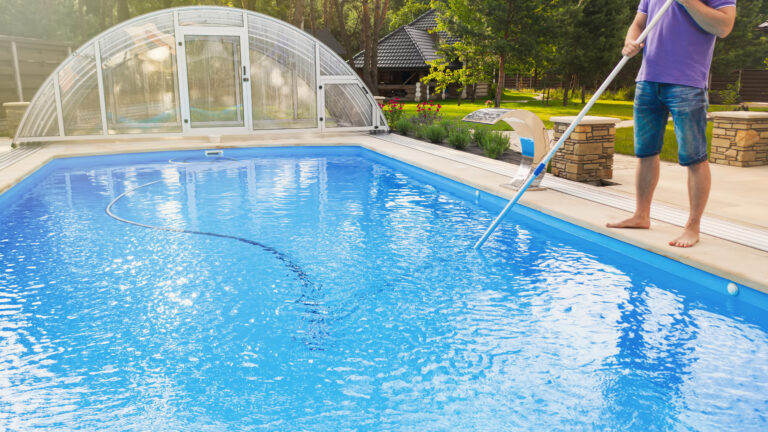Choosing the Best Grass for Your Backyard
Choosing the Best Grass for Your Backyard: A Comprehensive Guide
A well-maintained lawn can significantly enhance the beauty and enjoyment of your backyard. However, selecting the perfect grass type for your lawn can be a daunting decision. With so many factors to consider, such as climate, maintenance requirements, and personal preferences, it’s crucial to choose a grass type best suited for your specific needs and lifestyle.
The key to making the right decision lies in understanding the different types of grass and their unique characteristics. From warm-season grasses that thrive in hot, sunny climates to cool-season grasses that tolerate shade and cooler temperatures – there is a variety that will ensure your lawn remains lush and inviting.
This article will provide valuable insight into choosing the best grass for your backyard, discussing various factors to help you make a well-informed decision. By considering aspects such as your region’s climate, soil conditions, and maintenance preferences, you’ll be able to create your dream lawn that not only looks stunning but also benefits the environment and suits your lifestyle.
Understanding Grass Types
When it comes to selecting the best grass type for your backyard, understanding the different species and their suitability for various climates and regions is crucial. In this section, we will briefly discuss warm-season grasses, cool-season grasses, and transition zone varieties.
Warm-Season Grasses
Warm-season grasses thrive in warm climates and hot summers. Some popular warm-season species include Bermuda grass, Zoysia, St. Augustine, and Centipede. These grass types generally have a higher tolerance for heat and drought, making them ideal for southern regions where temperatures often soar.
- Bermuda grass: Durable, wear-resistant, and easy to establish, Bermuda grass is perfect for high-traffic areas. It can be grown from sod or seed mix.
- Zoysia: With a fine texture and dense growth, Zoysia is prized for its low-maintenance qualities and resistance to pests and diseases.
- St. Augustine: Adapted to sandy soils and saltwater, St. Augustine requires a more moderate climate, often found in coastal areas.
- Centipede: This low-growing grass type is well-suited for moderately fertile soils and requires minimal maintenance.
Cool-Season Grasses
Cool-season grasses, such as Kentucky bluegrass, Fescue, and Ryegrass, are better suited for northern regions with cold winters and milder summers. They typically require more water than warm-season grasses but offer exceptional color and density during spring and fall when temperatures are cooler.
- Kentucky bluegrass: Known for its dark green color and fine texture, this popular cool-season grass is robust and resilient, making it versatile enough for a variety of backyard needs.
- Fescue: The fescue family includes tall fescue and fine fescues, both of which are low-maintenance grasses with shade tolerance.
- Ryegrass: Often used as a temporary grass to enhance seed mixtures or overseed warm-season grasses, ryegrass offers a rapid germination period and attractive texture.
Transition Zone Varieties
In the transition zone, which sits between the warm and cold climates, homeowners may encounter challenges trying to find the perfect grass type. Hybrid solutions, such as tall fescue and zoysiagrass, are often recommended for these areas.
- Tall fescue: With deep roots and a high tolerance for heat, drought, and heavy traffic, tall fescue is an excellent choice for transition zones.
- Zoysiagrass: Combining the best of both worlds, zoysiagrass offers the heat tolerance of warm-season grasses and the green color and cold hardiness of cool-season grasses, making it suitable for a wide variety of climates.
By understanding the characteristics and preferences of these grass types, you can make an informed decision on the best choice for your backyard, based on your region’s climate and specific needs.
Assessing Your Yard Conditions
Before choosing the best grass for your backyard, it is essential to assess the conditions of your yard. Several factors contribute to the health and growth of your grass. Understanding these factors will help you select the most suitable type of grass that requires the least amount of water and maintenance while still providing the desired appearance. In this section, we will discuss soil and sunlight analysis, as well as foot traffic and maintenance requirements.
Soil and Sunlight Analysis
Soil Type: Determine the soil type in your backyard to identify the grass species most likely to thrive. Generally, soils can be categorized as sandy, clay, or acidic:
- Sandy soils have excellent drainage but retain less water and nutrients, requiring more frequent watering and fertilization.
- Clay soils are nutrient-rich but have poor drainage, which can lead to shallow root systems and poor drought tolerance.
- Acidic soils may require liming to adjust the pH and improve nutrient availability.
Sunlight and Shade: Determine the amount of sun and shade your yard receives throughout the day. Grass species have varying shade tolerance:
- Sun and Shade Mix: For yards with a mix of sunny and shady areas, select a grass species with high shade tolerance.
- Full Sun: For yards with full sun exposure, choose a grass species with high drought tolerance and resistance to heat stress.
Foot Traffic and Maintenance
Foot Traffic: Consider the amount of foot traffic your backyard is likely to have. Some grass species are more resilient to foot traffic, while others require more care to maintain their appearance:
- Low-Maintenance Grasses: Ideal for high foot traffic areas, providing better resistance to wear and tear and requiring less maintenance.
- High-Maintenance Grasses: More suitable for low foot traffic areas, as they often require more frequent watering, mowing, and lawn care to maintain their appearance.
Maintenance Requirements: Opt for a grass type that suits your preferred maintenance level. The type of grass you choose will affect the watering, mowing, and lawn care practices required to maintain a healthy and attractive yard:
- Low-Maintenance: Ideal for homeowners with limited time or interest in maintaining their yard. Low-maintenance grasses typically require less frequent watering and mowing.
- High-Maintenance: Best for homeowners dedicated to lawn care and willing to invest time and resources in their yard. High-maintenance grasses may require more frequent watering, mowing, and fertilization.
In summary, assessing your yard conditions, such as soil type, sunlight, foot traffic, and maintenance requirements, is crucial in choosing the best grass for your backyard. This thorough assessment will ensure a healthier, more sustainable lawn that meets your specific needs and preferences.
Choosing the Right Grass for Your Home
Evaluating Appearance and Function
When selecting the type of grass for your home, it is essential to consider both its appearance and functionality. Start by thinking about how you want your lawn to look. A fine-textured grass like fescue offers an attractive, even appearance, while grasses like Bermuda and St. Augustine tend to grow thicker and more coarsely.
Keep in mind your zone and regional climate when determining which grass is best for your area. For example, Zoysia grass is an ideal choice for warm climates due to its drought tolerance and ability to thrive in a range of environments. In colder regions, grasses like fine fescue boast cold tolerance and are low maintenance options.
It’s essential to consider the specific growing conditions of your yard – including shade, foot traffic, and soil quality – as they will impact the health of your grass. Establish a balance between your desired appearance and the functional requirements of your landscape.
Special Considerations for Grass Selection
Here are some factors to keep in mind when choosing a grass type for your yard:
- Drought tolerance: Evaluate your location’s susceptibility to drought and water restrictions. Drought-tolerant options like Bermuda and Zoysia grass can help conserve water and maintain a healthy appearance even in arid climates.
- Shade tolerance: Determine the amount of shade in your yard, and choose a species that can grow with varying degrees of sunlight. Grasses like St. Augustine or fine fescue are known to be shade-tolerant.
- Ground covers: In areas where grass struggles to grow or maintain an attractive appearance, consider using ground covers like creeping thyme or clover to offer a low-maintenance and aesthetically appealing solution.
- Regional adaptation: Research the grass varieties best suited to your region. Look to your neighbors’ landscapes for inspiration, and consult local experts or nurseries for guidance on suitable grass types.
By considering factors like grass appearance, growing conditions, and regional adaptations, you can confidently select the ideal grass for your backyard, ensuring a healthy and beautiful landscape.



